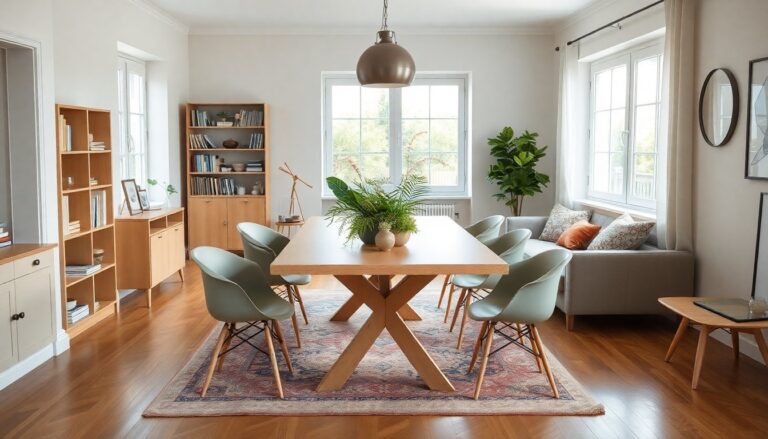Argomenti trattati
Furnishing a space can serve as both a rewarding and challenging aspect of home design. The right furniture has the power to transform a dull room into a vibrant, welcoming atmosphere that reflects your personal style. Whether you are starting from scratch or seeking to refresh your current decor, understanding key principles of furnishing can significantly enhance your living environment.
This article explores effective strategies for choosing and arranging furniture to maximize both functionality and aesthetics. By understanding the basics of scale and proportion, as well as the harmony of color and texture, you will gain the insights necessary for a successful furnishing project.
Understanding scale and proportion
One of the most crucial aspects of furnishing is grasping scale and proportion. These principles dictate how furniture relates to the space it occupies, ensuring that the room feels balanced and cohesive. When selecting furniture, consider the size of your room. For smaller spaces, opt for multi-functional furniture, such as a sofa bed or a coffee table with storage. This not only conserves space but also enhances functionality.
Choosing the right size
The size of the furniture you select should complement the dimensions of the room. Oversized furniture can make a room feel cramped, while small pieces can become lost in a larger space. A good rule of thumb is to leave at least 30 inches of walking space around furniture pieces. This ensures easy movement and fosters a sense of openness within the room.
Creating visual balance
Visual balance can be achieved by arranging furniture to distribute weight evenly throughout the room. For instance, if you have a large sectional sofa on one side, balance it with a tall bookshelf or a series of artworks on the opposite side. This arrangement creates a harmonious look while preventing any area from feeling excessively heavy or cluttered.
Color and texture harmony
Another significant factor in successful furnishing is the harmony of color and texture throughout your space. The interaction of colors can greatly influence the mood and feel of a room. When selecting colors, consider the overall theme you want to convey. Warm tones such as reds, oranges, and yellows create a cozy and inviting atmosphere, while cool tones like blues and greens evoke calmness.
Incorporating texture
Texture plays an essential role in adding depth and interest to your furnishings. Mixing and matching materials such as wood, metal, and fabric adds dimension to your space. For example, pairing a sleek leather sofa with a soft wool throw and a rustic wood coffee table creates a visually appealing contrast that invites touch and interaction. Remember that texture can also influence ambiance—rough textures can create a more casual feel, while smooth surfaces tend to be more formal.
Creating focal points
Every room should have a focal point—an area that draws the eye and creates a sense of interest. This could be a stunning piece of artwork, a statement piece of furniture, or even a fireplace. Once you establish your focal point, arrange other elements around it to enhance its effect. For instance, if your focal point is a beautiful piece of art, consider placing a set of complementary furniture pieces nearby to create a cohesive look.
Practical tips for furnishing
With the fundamentals of scale, proportion, color, and texture covered, let’s explore practical tips for successfully furnishing your space. Start by making a plan—measure your room and sketch a layout that incorporates your desired furniture pieces. This will help you visualize how everything will fit together.
Moreover, don’t hesitate to mix styles. Combining different styles can create a unique, personalized aesthetic. For example, pairing modern furniture with vintage decor can lend your space character and charm. Lastly, always keep your lifestyle in mind. Choose furnishings that not only look appealing but also serve your daily activities.
This article explores effective strategies for choosing and arranging furniture to maximize both functionality and aesthetics. By understanding the basics of scale and proportion, as well as the harmony of color and texture, you will gain the insights necessary for a successful furnishing project.0

